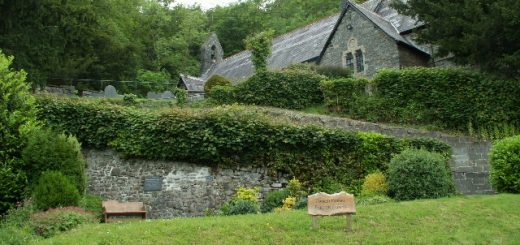The Town Of Ramsgate, Wapping
The Town Of Ramsgate public house is a Grade II listed building dating from the 17th century. Press Gangs were said to recruit drunks and imprison them in the cellars of pub, prior to them taking up their new career in the Navy. The Wapping Old Stairs, beside the pub lead down to the River Thames and it is these steps that are said to be haunted by George Jeffreys, 1st Baron Jeffreys of Wem, The Hanging Judge. His apparition has apparently been seen by River Police patrolling the Thames.
George Jeffreys (15 May 1645 – 18 April 1689) was said to frequent the Prospect of Whitby public house and The Town Of Ramsgate (which was previously called The Red Cow and The Prince of Denmark), possibly to view events on Execution Dock which was a gibbet on the Thames close by the pub. It was used by the Admiralty to hang those sentenced to death by the Admiralty Court, whose jurisdiction only covered crimes committed at sea, such as piracy. Execution Dock was therefore kept in their jurisdiction, in the Thames, just beyond the low-tide mark. It was used for 400 years up to around 1830 and a reproduction of the gibbet stands outside the Prospect of Whitby.
 George Jeffreys who was born at Acton Hall, Wrexham, was Lord Chancellor, Chief Justice of the King’s Bench and a member of the Privy Council during the reign of King James II. Following King James (the last Catholic monarch to reign over England and Scotland) ascension to the throne on 6 February 1685, the Duke of Monmouth rebelled. The Monmouth Rebellion was ended with his defeat at the Battle of Sedgemoor and the subsequent trials of the rebels were known as the Bloody Assizes. These were over seen by five Judges, but Lord Chief Justice George Jeffreys led them. Roughly 200 people were executed (mainly hanged) and about 800 were transported to the West Indies. Following the Bloody Assizes, Jeffreys was known as the ‘Hanging Judge’.
George Jeffreys who was born at Acton Hall, Wrexham, was Lord Chancellor, Chief Justice of the King’s Bench and a member of the Privy Council during the reign of King James II. Following King James (the last Catholic monarch to reign over England and Scotland) ascension to the throne on 6 February 1685, the Duke of Monmouth rebelled. The Monmouth Rebellion was ended with his defeat at the Battle of Sedgemoor and the subsequent trials of the rebels were known as the Bloody Assizes. These were over seen by five Judges, but Lord Chief Justice George Jeffreys led them. Roughly 200 people were executed (mainly hanged) and about 800 were transported to the West Indies. Following the Bloody Assizes, Jeffreys was known as the ‘Hanging Judge’.
King James II was forced to flee to France and replaced with William and Mary following the Glorious Revolution, when William landed at Torbay on 5 November 1688. Jeffreys stayed in London as long as he could and then attempted to sneak out of the country dressed as a sailor. It is from these events that The Town Of Ramsgate haunting has its roots, as he was in the pub when he was recognised by someone who had faced him in the dock and survived. Captured by a mob and brought before the Mayor, he was put in protective custody in The Tower of London for his own safety. George Jeffreys died on 18 April 1689 of a kidney disease whilst in The Tower of London. His body was moved to the St Mary Aldermanbury Church in 1692 which was destroyed by German bombers in 1941.
Note: There are probably a further half dozen locations suspected of being haunted by Judge George Jeffreys.




Recent Comments